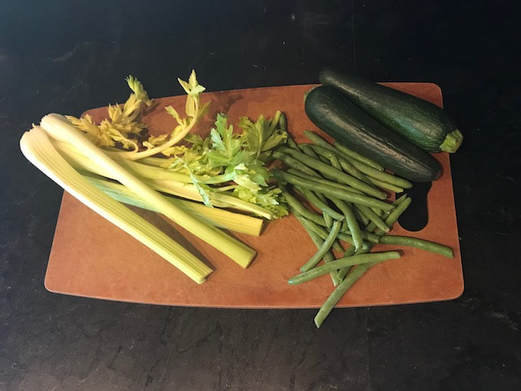Here are a few tips to improve and support digestion:
- Eat wholesome, fresh, mostly cooked food.
- Eat regular meals, fasting between meals and at night.
- Eat in a calm environment, sitting down.
- Eat a light breakfast, more at lunch and a lighter evening meal.
- Sip room temperature or hot water with a meal and avoid iced water or cold beverages.
- Include all 6 tastes.
The Basics of an Ayurvedic Kitchen
- Fresh vegetables and fruits
- Ghee and other healthy fats such as olive oil and coconut oil
- Fresh herbs and spices
- Whole grains





 RSS Feed
RSS Feed
